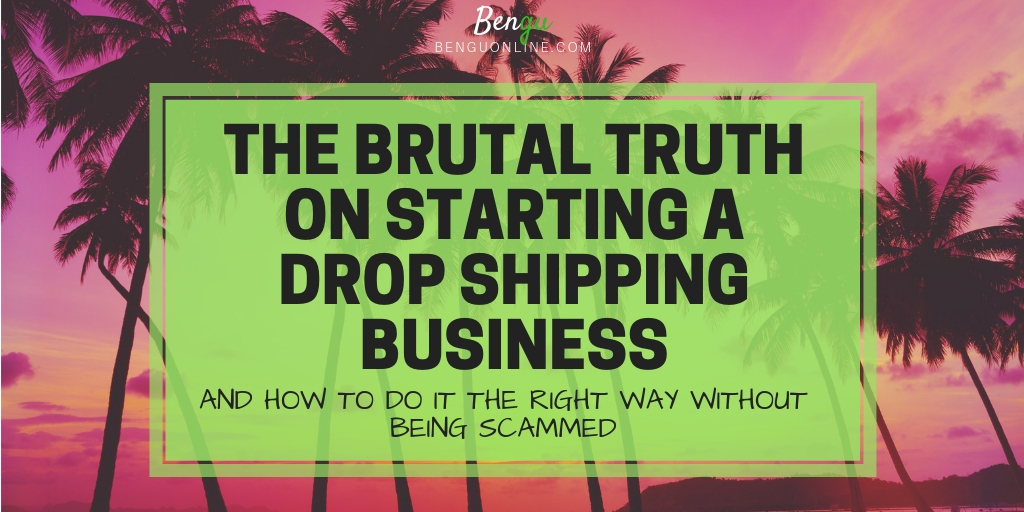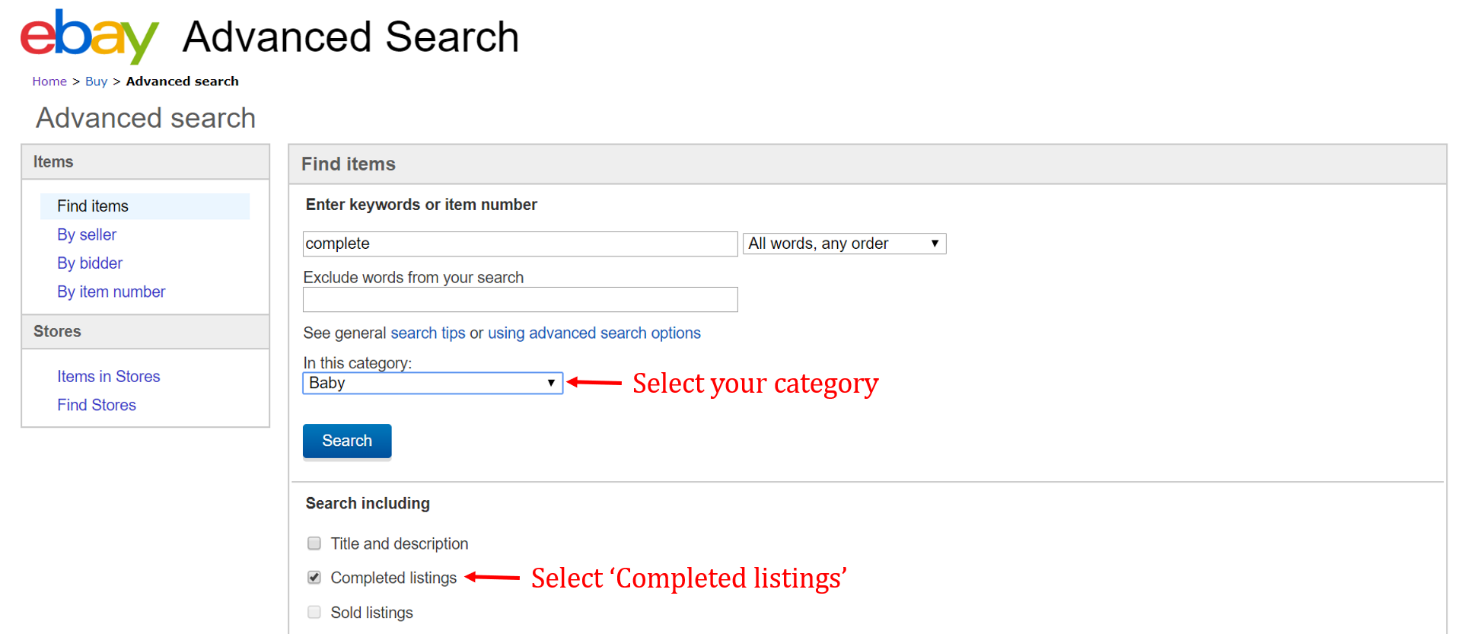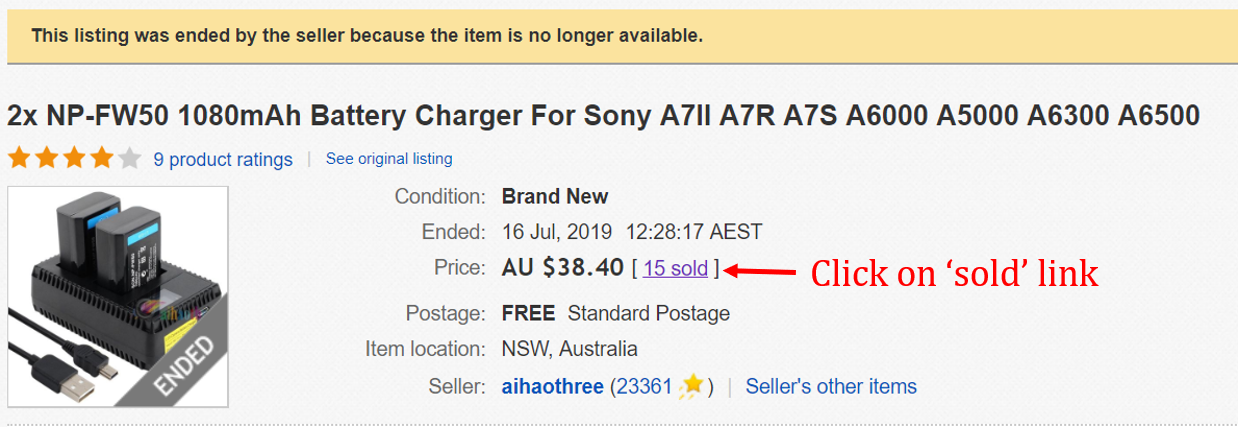Want to start a drop shipping business for as little as $75? Like the idea earning over $100,000 within a year?
Hell yeah, who wouldn’t!
What’s the catch?
No catch. Just the hard truth.
Starting a drop shipping business in 2019 has never been easier. But growing a profitable business is a different story.
It’s tough, competitive, hard work and – despite the hype you may have read – it’s certainly not a get-rich-quick scheme.
However, it can and does work if you know how to approach it properly.
So that’s what you’ll learn in this post. The nuts and bolts of successful drop shipping without the sugar coating.
We’re going to reveal what those gurus selling ‘how-to’ courses don’t want you to know.
Then we’ll detail the 3 things you need to do to grow a successful drop shipping business — and finish with the answers to your most frequently asked questions.
Ready to dive in?
What is drop shipping and how does it work?
Drop shipping is an online e-commerce store selling products which are then shipped to their customers.
So far, nothing remarkable.
But with drop shipping, you – the retailer – never handle the products you sell. You just market them, take the orders and watch the money roll in. And all this can be done from your back bedroom.
In its simplest form, this is how it works:
- You find products you want to sell and showcase them in your online store.
- A customer places an order and pays you the advertised retail price.
- You pass that order on to your dropship supplier (who may be the manufacturer or a wholesaler).
- The supplier bills you the agreed wholesale price and ships the item directly to the customer.
The process, pros and cons are all neatly summed up in this infographic. But we’re going to dig a little deeper through this article and cover a bit more ground. So, you’ll want to stick around:
Related: Drop Shipping and Private-label e-commerce are both popular business models in the commerce space. Check out our review for one the flagship courses in this area — Amazing Selling Machine.
The Grim Realities of Drop Shipping (what course creators don’t want you to know)
Have you seen those Drop Shipping courses promising freedom and financial independence in a few simple clicks?
On the face of it, it’s easy to get swept up in the excitement.
But what these course owners won’t tell you is that drop shipping is one of the most cut-throat business models on the internet today, which means you’re going to have to work smarter and harder than everyone else to make a sale without sacrificing every penny of your profits.
And that’s just the beginning.
Here’s a full rundown of the grim realities:
It’s hard to build a brand
When you’re selling someone else’s products, it’s hard to build customer loyalty and brand awareness for your own business.
If the customer is delighted with the product, they’re going to remember the name on the box, not your online store that sold it to them. Especially when there are thousands of other sellers all vying for their attention.
If no-one cares about your brand, they’re not going to seek you out next time. Which is one of the reasons 90% of new drop shippers quit before they’ve started.
If you’re no good at online marketing, forget it
It’s a dog-eat-dog world out there and only the best digital marketers survive as successful drop shippers.
Once you’ve launched your business, you’ll need to dedicate most of your time to SEO, social media and online ad campaigns.
Sure, there are experts who can do it for you, but here’s the rub:
Your outsourcing costs are likely to be greater than any profit you make.
Plus, you need to understand what works and what doesn’t for your business. If you’re not monitoring your campaigns daily, you’ll end up throwing money down the drain.
You could become entangled in a legal issue
As the retailer, you’re liable for the products you sell.
Imagine if a customer has an allergic reaction to a beauty cream you sold from a random Chinese supplier. Or you discover they don’t have the licence to make the Nike trainers you’ve been marketing.
One way you can protect yourself is with a properly structured supplier agreement, but a good dose of common sense never goes amiss.
If you’re unsure about the legality of what you’re selling or it’s a product in a highly regulated market, stay well away. You could be walking into a legal minefield.
The competition is INTENSE and the profit margins are miserable
Because the barrier to entry is very low, the competition is fierce.
And it’s not just the other drop shippers you’ll be competing against. You’ll be taking on retail giants like Walmart and Amazon. The only thing 99% of drop shippers compete on is price, which means shaving your margins so close, they’re often on life support.
You have no control over your supply chain
What if your supplier runs out of stock? Or worse still, drops the product line you’re selling after you’ve invested all your time (and money) in building your online store and rolling out a marketing campaign?
As the retailer, you can’t control the supply, quality, delivery, or packaging.
But you’re the one who must deal with the disgruntled customer when their product turns up late, damaged, or the wrong colour.
Starting an e-commerce business from scratch is no walk in the park
Let me guess:
You thought drop shipping meant owning a business that basically ran itself once you’d set up shop? And you’d be sipping cocktails in Acapulco while the orders rolled in and your supplier shipped the products out.
Sure, you can make a good living from drop shipping, but it’s hard graft and a massively steep learning curve if you’ve never done it before.
It’s also going to take some time before the profits start coming in.
You have to do your research, understand your market, build relationships with your suppliers, become an online marketing expert, deal with unhappy customers, build your brand, monitor sales and orders, tweak your advertising, and always stay one step ahead of your competitors.
Phew!
You’ve probably gathered by now that drop shipping is no stroll through the park.
It can be lonely
We all love the idea of working from home (or that bar in Acapulco), but it’s really not as glamorous as it sounds.
In fact, working from home for extended periods of time can be quite isolating.
Unless you start the business with someone else (and share the profits), you’ll have nobody to bounce ideas off. You’ll second guess your abilities and wonder if you’ve made the right decisions.
It can be tough to keep going when there’s no-one to keep your spirits up or inspire you to get back on the horse when you fall off.
Even the little things like the lack of watercooler small talk with your colleagues can have a big impact on your emotional wellbeing and state of mind.
The solution?
Take advantage of co-working spaces in your local area so you can have the best of both worlds.
7 Great Reasons to Start a Dropshipping Business Today
Now that we’ve covered the stark realities of launching and growing a dropshipping business from scratch, let’s cover some of the positive aspects.
Here are 7 reasons why drop shipping is attractive to a lot of people:
- It’s easy to set up. And you don’t need an eye-watering investment to get started, but be prepared to spend at least a few hundred dollars.
- You can run your business from anywhere with an internet connection (including that bar in Acapulco ;-) ).
- Unlike other e-commerce business models, you don’t have to tie up your cash with inventory or warehousing.
- It’s a great cash flow business – you only pay for the products after you’ve received the order (and payment) from your customer.
- There is no end to the variety of products you can source. There are millions to choose from.
- Drop shipping is highly scalable. You can test products and add new ones quickly. And the financial risk is low if the product fails.
- As your business grows, you’ll start to understand what sells best, what your customers want, how to increase your profit, which price points to aim for and so on. In other words, you’re able to test the market as you earn money.
The 3 Things You Must do to Grow a Successful Drop Shipping Business
If you’re seriously considering launching your own drop shipping business from scratch, you’ll want to follow a proven three-step formula. This formula encompasses the primary success factors that’ll determine your growth, scalability and profit margins in your business.
Get these three things right and you’ll be well on your way to owning a successful drop shipping company:
#1 Find profitable niches and products to sell
Finding profitable niches and products is going to make or break your business, so take your time to do your research as thoroughly as you can.
Do not skip this part!
Let’s break it down into a few easy-to-follow steps:
Start with what you know
We all have likes and dislikes, right?
We have hobbies that engross us or play a sport every weekend. We love our pets, our kids, going on holiday or buying stuff for our home. It makes us happy to talk about these things. We know enough about them to want to learn more.
Write down a list of all those things.
Now think broader. What did you last buy online? What do you keep buying online? What would you buy if money wasn’t an issue? What can’t you buy in your local neighbourhood?
Now go even broader. Draw up a list of questions for your family, friends and all your contacts on social media.
Ask them questions like:
Expand your horizons
The internet is bursting with profitable product ideas — if you know where to look.
Check out these strategies to help you expand your research:
By now you should have a solid pile of words, thoughts and ideas for products and niches. Start to shortlist them by removing the following:
- Clothing and shoes: There’s too much room for error with different sizes and you’ll end up with a mountain of returns. Items like scarves, ties or one-size-fits-all are fine.
- Fragile products: Avoid anything that’s going to break when it’s tossed into a delivery truck.
- Safety products: Things like bike helmets and safety glasses. What if they don’t work as advertised and someone gets injured? Guess who’s liable?
- Electronics and technical gadgets: These come with a range of potential service problems and questions you can’t answer.
- Products dominated by big brands: For example, avoid smartphones (Apple), or trainers (Nike). You’ll never compete with their brand loyalty. But phone accessories, for instance, are OK.
- Large, heavy items: Too expensive and difficult to ship.
- Seasonal products: They have low or no demand for half the year.
- Flash-in-the-pan trends: They’re OK while they last (if you catch the wave) but you don’t want to build a business around a product that’s got a shelf life of a few months at best.
- Common products found locally: Pick products your customers can’t find down the street. The harder it is for them to source locally, the more they are likely to buy it from you.
- Really cheap items: Profit margins in drop shipping are low enough already. The higher your price point, the higher your profit. It’s a simple equation.
- Products you can’t advertise on Facebook: Facebook is a drop shipper’s best friend, so you need to know which products you can’t advertise.
Now go to Amazon’s home page and click on the drop-down menu in the search box where it says ‘All Departments’. Use these departments to sort your short list of product ideas into the Amazon categories. This is going to help when it comes to the next step.
Test and enhance your ideas
Amazon is the king of e-commerce, which makes it a hotbed of information for aspiring drop shippers. We’re going to show you a cool way to test and enhance your initial list of product ideas.
What you are looking for is other products that are already selling well.
It sounds counterintuitive, but it’s the golden rule of drop shipping. Products sell well because there is high demand from a greater number of people. And that’s the sandpit you want to be playing in.
Let’s say one of your ideas is dog collars, which is in the ‘pet supplies’ niche.
Go to that department in Amazon and select any dog collar. Open the page and scroll down until you find the section titled ‘Product Details’. Listed here you will see the Amazon ‘Best Sellers Rank’ (BSR) for that product, and a link to the best-selling items in pet supplies:
The BSR is a score that Amazon assigns to products. It ranks them based on current as well as historical sales data, updated hourly.
You can see from the above example that the product ranks #50 in Pet Supplies and #2 in Dog Training Collars, so it’s a high selling product.
Click on the link to Dog Training Collars. Find the top-selling products and read their reviews.
What do the reviews tell you about the type of collars customers are looking for?
Study the price points and features. How do your product ideas compare? Are there gaps in the competitors’ offerings that you can fill?
Now click on the link to the best-selling items in Pet Supplies to find more products in your niche that have already proven to be popular, which you can add to your list of ideas.
Another great source of information is eBay.
Go to the home page and click on the ‘Advanced’ search button.
Select your category or niche, and then select ‘completed listings’. Scroll down to the bottom of the page and hit ‘Search’:
The products with green prices are the ones that sold. Open one of the listings and click on the link that shows you how many items were sold:
This takes you to a page that shows you the quantity sold, the price they sold for and the date they sold. So now you can track which items are selling and how fast.
How cool is that!
Using this technique over a few weeks, focus on one or two niches that interest you and track completed sales.
See if you can identify businesses that are consistently selling multiple products every day at the same price, which means they’re not having to discount. These are gold nuggets of information for drop shippers.
By now you should have a solid list of product ideas in one or two different niches you think will work, based on your research.
Related: Into affiliate marketing? Here’s why you should stay away from the Amazon Associates affiliate program.
#2 Find the right suppliers
As a drop shipping merchant, you are entirely at the mercy of your suppliers. So, you need to be really picky.
There are several different ways to find the right suppliers.
- Contact the manufacturer direct: If you know who makes the product you want to sell, contact them and ask for details of their wholesalers. If you call several different manufacturers in your chosen niche and the same wholesaler’s name keeps coming up, you can be reasonably sure they are going to be reputable.
- Explore online marketplaces: Aliexpress.com and chinabrands.com are two of the market leaders.
- Try online directories: Worldwide Brands is one of the biggest, but you have to pay a $249 fee to access it.
- Go to trade shows: If you’re lucky enough to have easy access to a trade show, this is one of the best ways to source and meet legitimate suppliers, and see their products first hand.
Leading e-commerce platform BigCommerce has made the research even easier with this Drop Shipping Companies and Suppliers Directory 2019.
But you still need to do your own due diligence. Once you’ve selected the suppliers you think you can work with, get in touch and start building a relationship. The honest ones shouldn’t object to answering a few questions.
Test their service
Before you commit to a new supplier, order something from them. How was their delivery time? What did the packaging look like? Did it have clear return instructions with the product?
Ordering samples makes good sense as it allows you to go through your customers’ experience first-hand.
#3 Build your brand
Hint: It’s about your customers, not your fancy logo.
Sure, your online store needs to look good, but your brand will be built off the back of your customers’ experience with your business.
This means you must consider everything your customers encounter:
The ads you run, the layout of your site, the ease of ordering, the quality of your products, the emails you send them, and so on.
But before you do anything, you need to define your brand. Here’s a great article to help you do just that.
Once you know how you want to position yourself, you want to consider the following customer touchpoints:
Advertising and marketing
As we mentioned up front, if you’re no good at online marketing, your future as a drop shipping retailer is doomed to fail.
You will never build a successful online brand unless you know how to advertise your products and market your business to attract and retain customers.
It’s not rocket science, but it will take practice and perseverance to master the right online techniques. This article is a good start. And here’s another one.
Your online store
Got your marketing down to a fine science?
Great!
The next touchpoint your customers will experience is your online store. It’s vital they can find their way around, access the information they need to make a purchase and enjoy the time they spend with you.
Everything they experience in your store will influence their decision not only to buy but whether to come back and buy again.
Here are some things you need to consider when building an online store that creates the best possible customer experience and strengthens your brand.
Customer communications
You can’t control the look of your product packaging or the timing of the delivery (that’s in the hands of your supplier), but you can control your customers’ expectations and avoid disappointments.
Be honest and upfront with your customers from the moment they enter your site.
Offer them easy ways to reach you, keep them up to date on the status of their order, let them know a realistic delivery date.
Once they have become a customer, keep in touch with them. Email them when you launch new product lines, ask for their feedback, encourage them to subscribe to your newsletter or blog.
Be friendly. Treasure your customer. They are your lifeblood.
Related: Looking for a solid email marketing tool? Check out these reviews for two popular options, Active Campaign and Convertkit.
Drop Shipping — The Final Word
Despite the grim realities covered in this article, drop shipping can be a significantly profitable online business model when approached the right way.
If you’re considering your own drop shipping venture, we wish you the very best. And we’d like to leave you with our favourite hot tips for drop shipping success and world domination:
- Start small — Focus on quality over quantity until you understand which products work for you.
- Be smart about profit — Keep a close eye on your sales data. If you don’t make a profit from the first 10 sales of a product, drop it and move on.
- Be prepared to work hard — Drop shipping requires a ton of upfront work before you start seeing any profits.
- Be realistic — Drop shipping is intensely competitive and a slow burner. Don’t give up your day job until you can pay your rent and other essential living costs from your profits.
Finally, the success of your drop shipping business will ultimately depend on the relationships you make with your suppliers, the brand you build and the respect you show for your customers.
PS — Please leave me a comment to let me know your thoughts on the piece and on drop shipping as a business model!

Mel Wicks is a certified content marketer and seasoned copywriter who helps business owners and entrepreneurs bring the ‘wow-where-do-I-sign-up’ oomph to their writing. Give your original content a shot in the arm with her free ‘No-Fluff Guide to Writing Epic Blog Posts Every Time’



















Very rich content, best marketing professional works
But I still think dropshipping is promising, just like shopify has been on the rise
Hey Nihao — yeah for sure dropshipping is still a viable business model. It’s just a lot harder than many people make it to be
Tbought provoking indeed…
Ah, dropshipping. A few YouTubers favorite topic to tell you can make hundreds to millions of dollars in a few weeks from your mobile device or laptop! It’s shameful to even give them the time of day and this post is realistic to show you that only hard work and dedication can bring your goals into fruition. Great work, Ahmad.
I always like to find a piece of content where you can see the hard work involved in creating any kind of online business. It is a very competitive world and you need to invest months before you can start seeing a dime for most of the cases.
Great angle and well-covered the topic Mel
Hey Sergio thanks for your reply. For sure, there’s no magic bullet like many would have us believe. Takes smart work, time, some risk and a little luck!